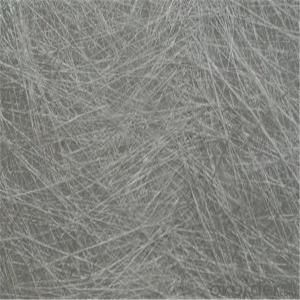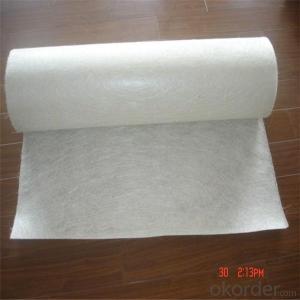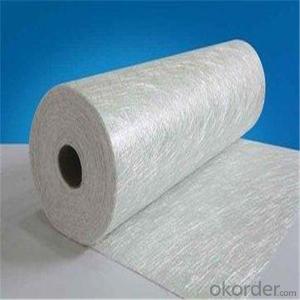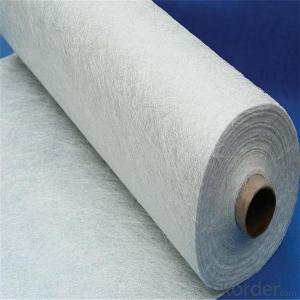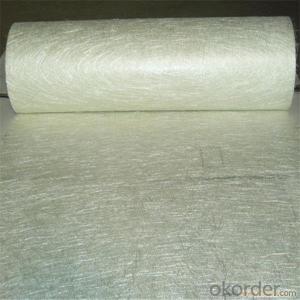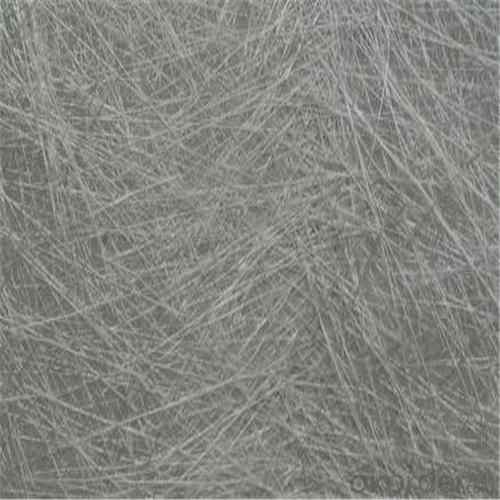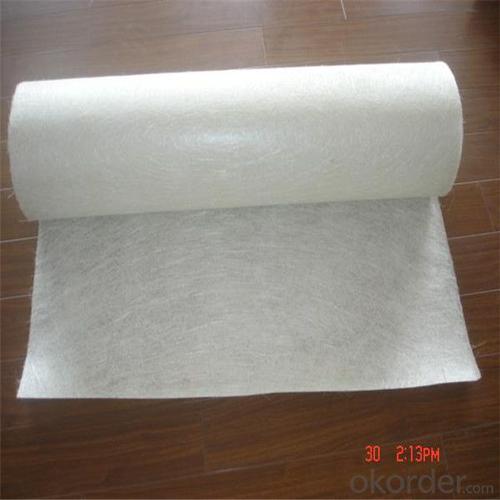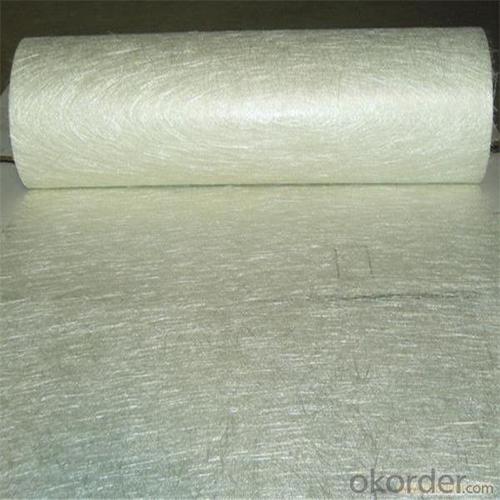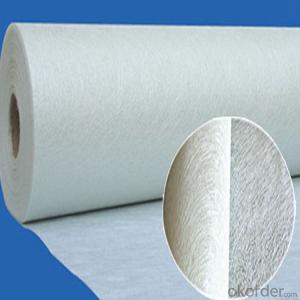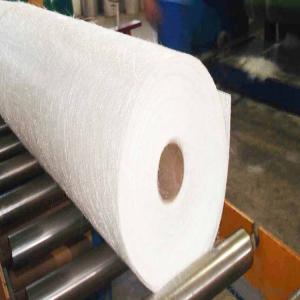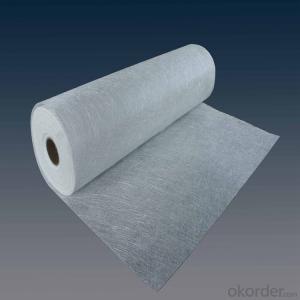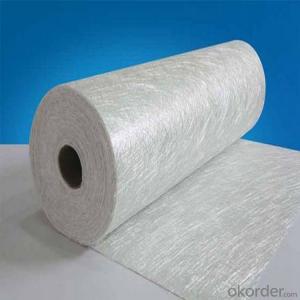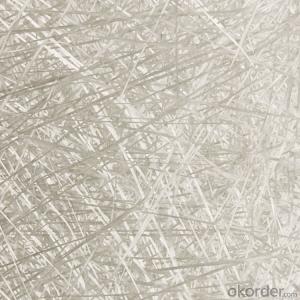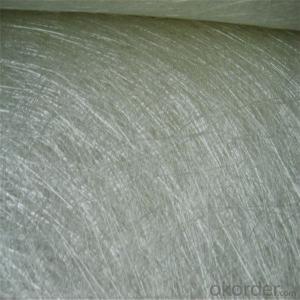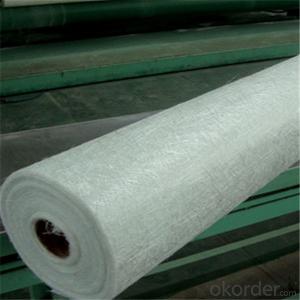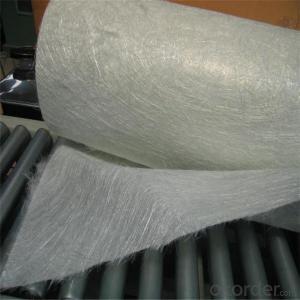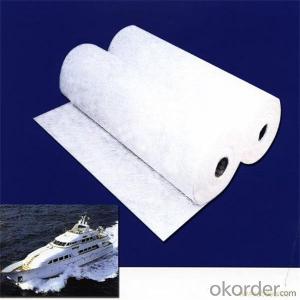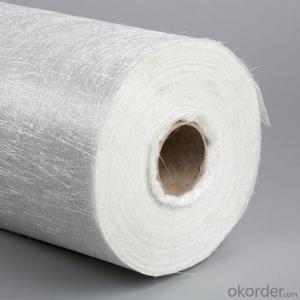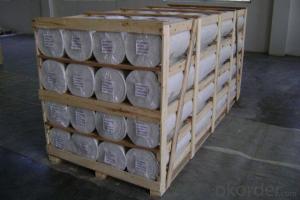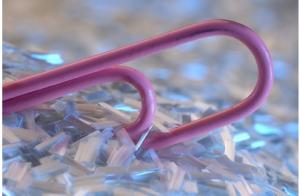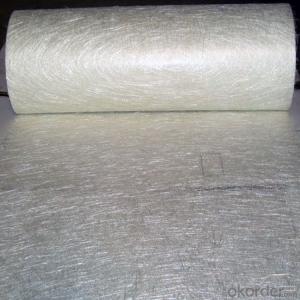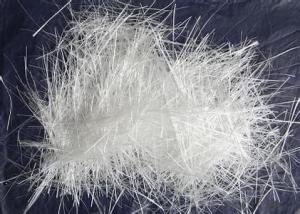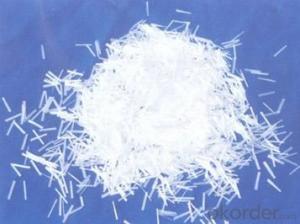Fiberglass Chopped Strand Mat Price for Fiberglass Stand Mat Factory
- Loading Port:
- Tianjin
- Payment Terms:
- TT OR LC
- Min Order Qty:
- 100 m.t.
- Supply Capability:
- 10000 m.t./month
OKorder Service Pledge
OKorder Financial Service
You Might Also Like
Quick Details
| Technique: | Chopped Strand Fiberglass Mat (CSM) | Dimensions: | 80g - 900g | Mat Type: | Continuous Filament Mat |
| Fiberglass Type: | E-Glass | Softness: | soft, very soft | Place of Origin: | Shandong, China (Mainland) |
| Brand Name: | cnbm | Model Number: | CSM | material: | fiberglass |
| Glass type: | E glass / C glass | Bond type: | powder or emulsion | Roll width: | 200 - 2600mm |
| Roll weight: | 28 - 55kgs | Density: | 225g/m2, 300g/m2, 450g/m2 | Certification: | ISO, CE |
Packaging & Delivery
| Packaging Details: | standand export packing . or packed as customer's need |
| Delivery Detail: | 10-20days after the contract is effective |
Specifications
Fiberglass Chopped Strand Mat
1.good combination fo resin
2.easy operation
3.good wet strength retention
Specification:
Fiberglass Chopped Strand Mat is an non-woven E- or C-glass fiberglass fabric manufactured by spreading continuous filament rovings of 50mm in length randomly and uniformly in combination with polyester binder in power form (or other binder in emulsion form). Powder or Emulsion fiberglass fiber chopped glass mat
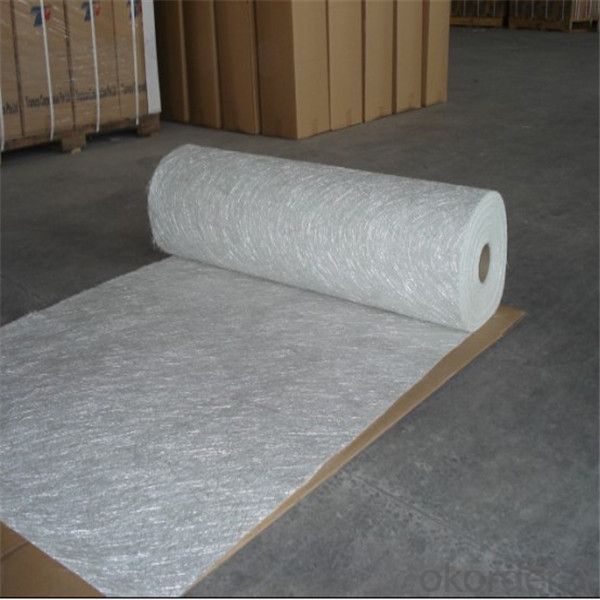
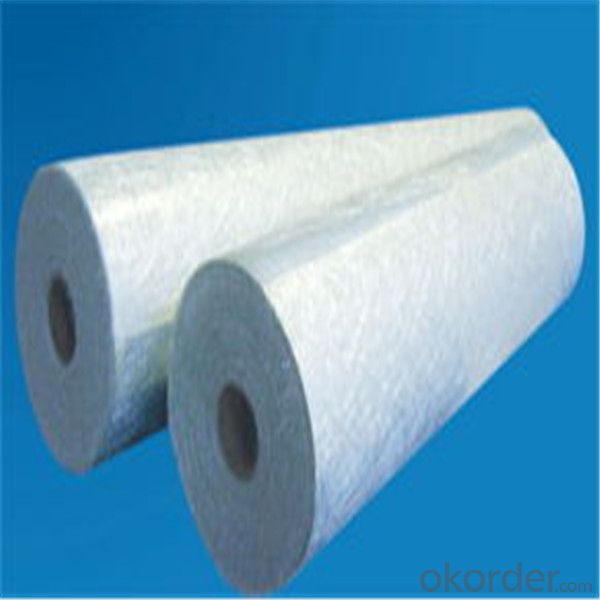

- Q: Is fiberglass chopped strand suitable for applications requiring high chemical resistance?
- No, fiberglass chopped strand is not suitable for applications requiring high chemical resistance. While fiberglass itself is known for its strength and durability, it is not inherently resistant to chemicals. Fiberglass chopped strand is composed of small strands of glass fibers that are bound together by a resin. This resin can be susceptible to chemical degradation and may not hold up well in environments with high chemical exposure. For applications requiring high chemical resistance, it is recommended to consider alternative materials such as chemical-resistant plastics, metals, or composites specifically designed for this purpose.
- Q: How is the flexural strength of fiberglass chopped strand composites determined?
- The flexural strength of fiberglass chopped strand composites is determined through a standardized testing method called the flexural test. During this test, a sample of the composite material is placed horizontally on two supports and a load is applied to the center of the sample. The sample is then subjected to a bending motion, causing it to deflect. The amount of force required to cause the sample to break or fracture is measured and recorded as the flexural strength. The flexural test provides valuable information about the ability of fiberglass chopped strand composites to withstand bending or flexure without breaking. It helps determine the structural integrity and performance of the composite material under bending loads, which is crucial in various applications such as construction, automotive, aerospace, and marine industries. It is important to note that the flexural strength of fiberglass chopped strand composites can be influenced by various factors, including the composition of the composite material, the length and orientation of the chopped strands, the resin matrix used, and the manufacturing process. Therefore, the flexural strength testing should be conducted under controlled conditions to ensure accurate and reliable results.
- Q: Production and process of glass fiber reinforced plastics.
- Nylon is made by the existing PU foaming material as the core material and the rudder; 6) It can realize automation to labor saving; 4) Usually, wet layer tools can be improved for the forming process.10 20, Take down the products, with roving, fiberglass surface felt. In most cases, the curing agent can be used in ambient temperature, unlike RTM aluminum which is smooth on both sides. Glass fiber roving for pultrusion has some effect in the core material. It is generally more brittle after curing: General by using multi-purpose epoxy: This method is usually adopted, because it is not harmful to health.
- Q: How is fiberglass chopped strand used in the transportation industry?
- Fiberglass chopped strand is widely used in the transportation industry for reinforcing various components. It is commonly used in the manufacturing of automotive parts such as bumpers, hoods, and interior panels. The chopped strands are typically mixed with resin to create a composite material that offers strength, durability, and lightweight properties. This enables the production of lighter vehicles, improving fuel efficiency and reducing emissions. Additionally, fiberglass chopped strand is also used in the construction of boats, airplanes, and other transportation modes to enhance their structural integrity and performance.
- Q: How is the surface roughness of fiberglass chopped strand measured?
- The surface roughness of fiberglass chopped strand is typically measured using a device called a profilometer. This instrument uses a stylus to scan the surface of the fiberglass and measures the height variations to determine the roughness. The results are usually expressed in terms of the Ra value, which represents the average roughness of the surface.
- Q: Is fiberglass chopped strand easy to handle and process?
- Yes, fiberglass chopped strand is generally considered easy to handle and process. Chopped strand is made up of small, short fibers that are cut to a specified length, usually around 1-3 inches. These fibers are typically mixed with a binder or resin and then used in various applications such as reinforced plastics, composites, and insulation. One of the main advantages of fiberglass chopped strand is its versatility and ease of use. The short length of the fibers makes them easier to handle compared to longer continuous fibers. They can be easily mixed with resins or binders and then molded or formed into desired shapes. The chopped strands can also be easily dispersed into a matrix material, allowing for even distribution of the reinforcement throughout the product. Furthermore, fiberglass chopped strand offers good wet-out properties, meaning that it can easily absorb and bond with resins or other matrix materials. This ensures proper adhesion and strength in the final product. In addition to being easy to handle and process, fiberglass chopped strand also offers several other benefits. It is lightweight, strong, and resistant to corrosion, making it an ideal choice for various applications. It also provides good thermal and electrical insulation properties. Overall, fiberglass chopped strand is a convenient and efficient material to work with. Its ease of handling and processing, combined with its desirable properties, make it a popular choice in industries such as automotive, construction, and aerospace.
- Q: Is fiberglass chopped strand resistant to abrasion?
- In general, fiberglass chopped strand exhibits resistance to abrasion. Fiberglass is renowned for its robustness and sturdiness, granting it exceptional protection against abrasion-induced wear and tear. The interweaving and bonding of the chopped strands result in a formidable and resilient material capable of withstanding abrasive forces. Nevertheless, the precise degree of resistance may vary depending on the precise composition and manufacturing technique employed in the production of the fiberglass chopped strand. It is advisable to consult the product specifications or communicate with the manufacturer to obtain specific details regarding the abrasion resistance of a particular fiberglass chopped strand product.
- Q: How is fiberglass chopped strand tested for quality control?
- Fiberglass chopped strand is typically tested for quality control through various methods such as visual inspection, fiber diameter analysis, tensile strength testing, moisture content analysis, and resin compatibility evaluation. These tests ensure that the chopped strand meets the required specifications and exhibits the desired mechanical properties for its intended application.
- Q: What are the typical fatigue properties of fiberglass chopped strand composites?
- The typical fatigue properties of fiberglass chopped strand composites depend on various factors such as the type of resin matrix, fiber orientation, and manufacturing process. However, overall, fiberglass chopped strand composites exhibit good fatigue resistance compared to other materials. One important factor in determining the fatigue properties of fiberglass chopped strand composites is the resin matrix used. Different resin systems have different fatigue characteristics, and the choice of resin can significantly impact the fatigue life of the composite. Generally, epoxy resins are commonly used in fiberglass composites and have good fatigue resistance, providing long-lasting performance under cyclic loading conditions. Fiber orientation is another critical aspect affecting the fatigue properties of the composites. The orientation of the chopped fibers within the matrix can influence the fatigue strength and durability of the composite. Typically, composites with aligned fibers exhibit higher fatigue strength compared to randomly oriented fibers. Additionally, the manufacturing process employed plays a role in determining the fatigue properties. Factors like fiber volume fraction, curing conditions, and manufacturing defects can affect the fatigue behavior of the composite. Proper manufacturing techniques, including controlling fiber content and minimizing defects, can enhance the fatigue resistance of the fiberglass chopped strand composites. Overall, fiberglass chopped strand composites generally demonstrate good fatigue properties. They are known for their high strength-to-weight ratio, excellent resistance to cyclic loading, and ability to withstand repeated stress. These properties make them suitable for various applications, including aerospace, automotive, marine, and sporting goods industries. However, it is important to consider the specific resin, fiber orientation, and manufacturing process to accurately determine the fatigue properties of a particular fiberglass chopped strand composite.
- Q: Is fiberglass chopped strand suitable for automotive interior components?
- Yes, fiberglass chopped strand is suitable for automotive interior components. Fiberglass is a versatile material that offers several advantages for automotive applications. It is lightweight, strong, and has excellent dimensional stability. These properties make it a suitable choice for various interior components such as door panels, dashboards, trim panels, and seat backs. Fiberglass chopped strand is commonly used in automotive interior components due to its superior mechanical properties. The chopped strands are mixed with a resin matrix to form a composite material that can be molded into various shapes. This allows for complex designs and customization options to meet specific automotive requirements. Additionally, fiberglass is resistant to heat, chemicals, and UV radiation, which are important considerations in the automotive industry. It can withstand high temperatures without compromising its structural integrity and is resistant to fading or discoloration caused by sunlight or chemical exposure. Furthermore, fiberglass chopped strand is an economical choice for automotive interior components. It offers a cost-effective solution without compromising on quality or performance. Its durability ensures long-lasting performance, reducing the need for frequent replacements and maintenance. In conclusion, fiberglass chopped strand is indeed suitable for automotive interior components. Its lightweight, strength, dimensional stability, resistance to heat and chemicals, and cost-effectiveness make it an ideal choice for various automotive applications.
Send your message to us
Fiberglass Chopped Strand Mat Price for Fiberglass Stand Mat Factory
- Loading Port:
- Tianjin
- Payment Terms:
- TT OR LC
- Min Order Qty:
- 100 m.t.
- Supply Capability:
- 10000 m.t./month
OKorder Service Pledge
OKorder Financial Service
Similar products
Hot products
Hot Searches
Related keywords
